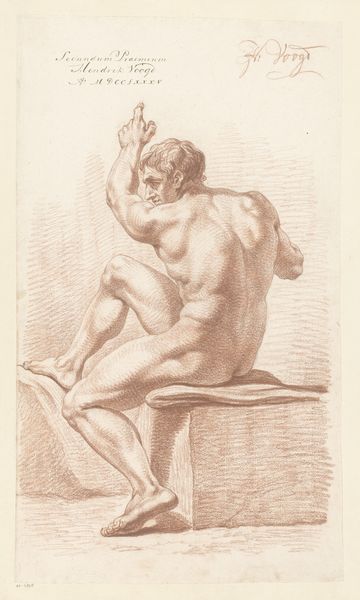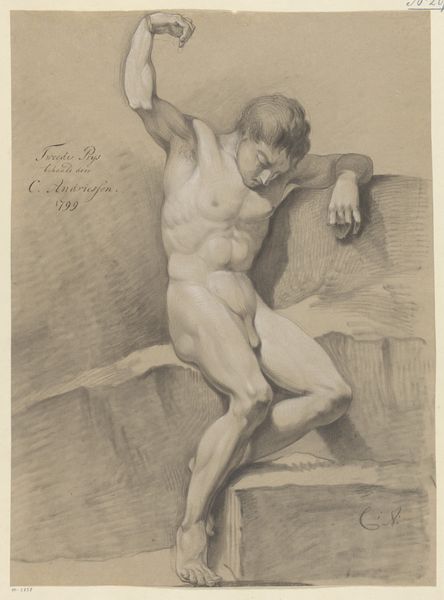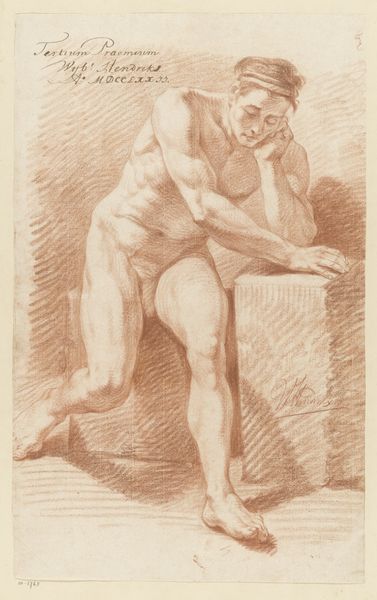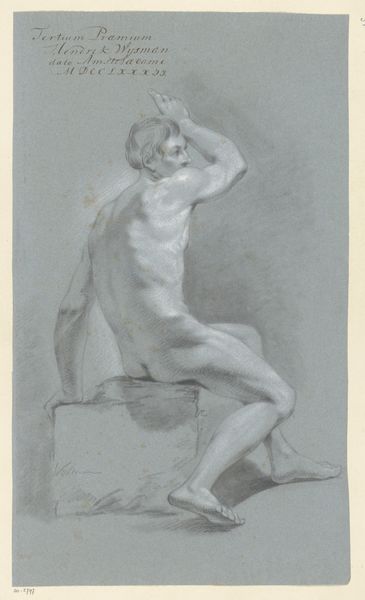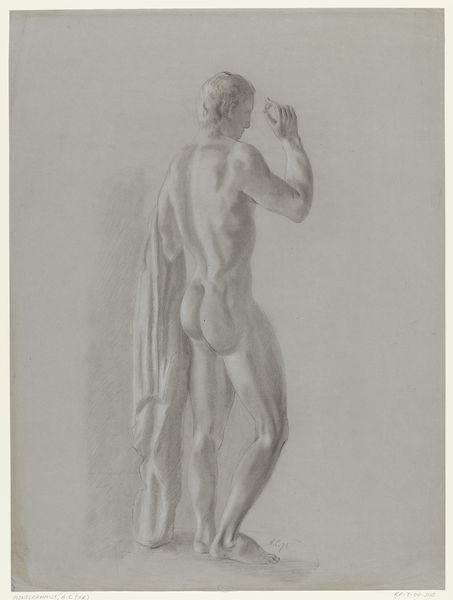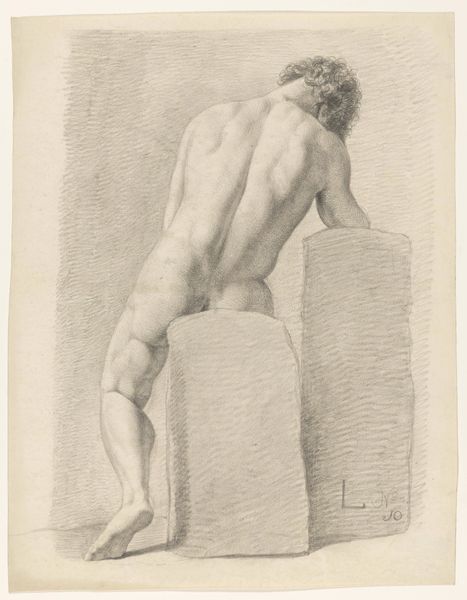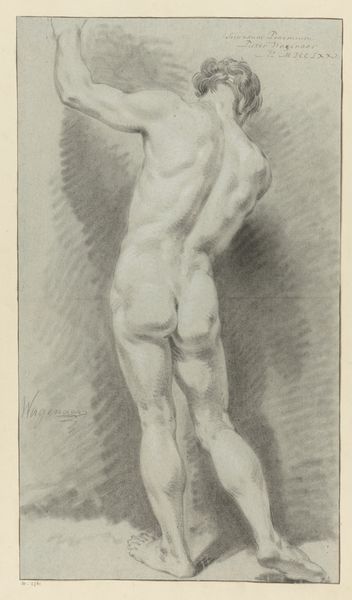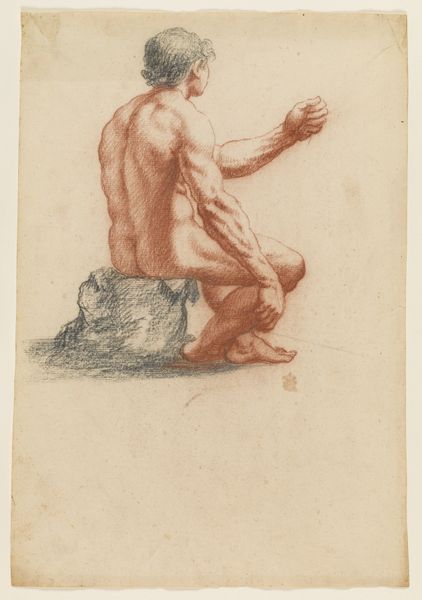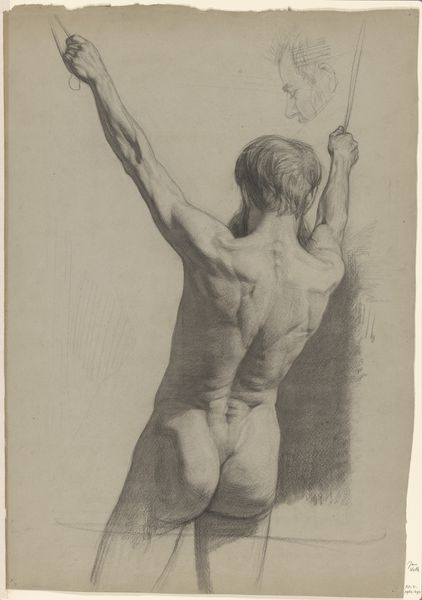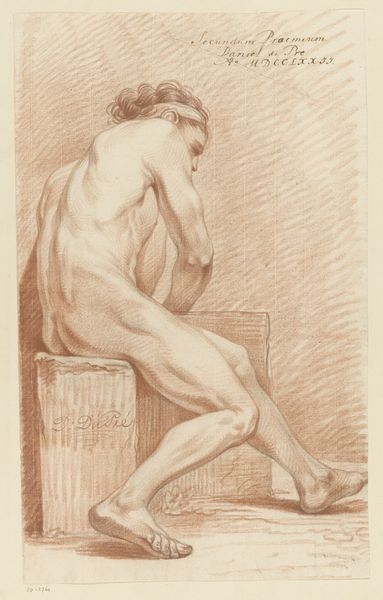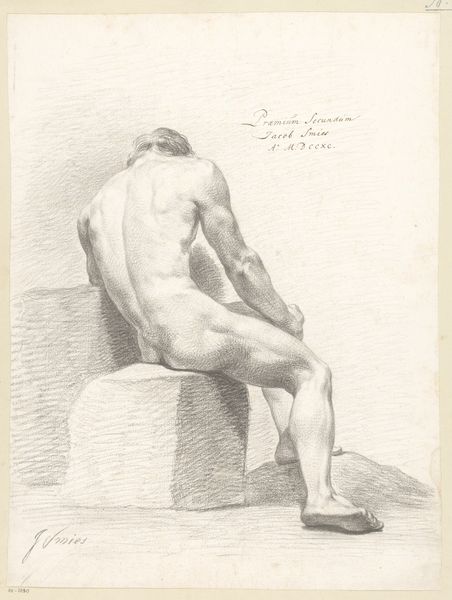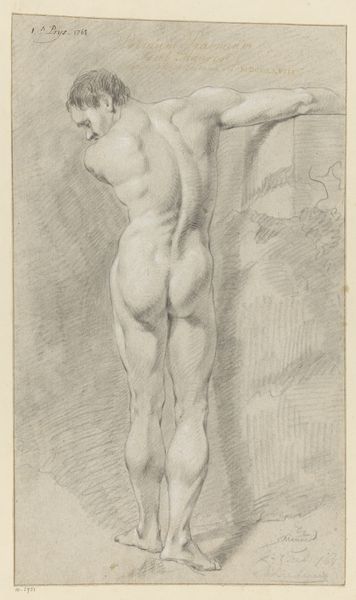
Zittend mannelijk naakt, van opzij gezien (3e prijs 1770) Possibly 1770 - 1772
0:00
0:00
drawing, pencil
#
drawing
#
form
#
pencil drawing
#
pencil
#
academic-art
#
nude
#
realism
Dimensions: height 450 mm, width 321 mm
Copyright: Rijks Museum: Open Domain
Curator: This drawing, attributed to Pieter Wagenaar, dates to around 1770. Titled "Seated Male Nude, Seen from the Side," it's a pencil study residing here at the Rijksmuseum. Editor: The first thing that strikes me is the rather muted palette, all grays and soft shadows. And the weightiness of the figure; he appears quite grounded, firmly planted on that block. Curator: Indeed. These academic studies served a very specific purpose within the artistic ecosystem. Think of the period: enlightenment ideals spreading, art academies solidifying their influence. Depictions of the nude male form were central to this curriculum. Editor: So the purpose here is less about individual expression and more about the mastery of form? It’s evident in the shading; look at the nuanced modulation across the torso and the musculature of his back, clearly meant to demonstrate an understanding of anatomy. Curator: Exactly! Consider the societal norms; this isn’t necessarily an individualized, eroticized depiction. This is an exercise, deeply tied to notions of ideal male beauty as defined and policed by the Academy. Think about the limited access to the models: primarily wealthy white men commissioning or benefiting from the reproduction of a very narrow standard. Editor: Yet there’s a slight awkwardness to the pose, an unusual contrapposto that undercuts some of that classical perfection. The weight distribution appears uneven, which grants a quiet individuality. Curator: An astute observation. The tension between prescribed form and individual interpretation, I think, becomes the more fascinating story. The piece becomes an echo chamber of the tensions inherent in the enlightenment era: rational thought against the backdrop of profound societal inequities and imbalances of power. Editor: I hadn't thought of it that way; seeing it only as a study feels like missing some crucial dimension of the work. It reflects a society as much as an ideal. Curator: Precisely, and understanding this interplay unlocks another layer of its meaning. It’s always exciting to find those deeper resonances in pieces we think we know so well.
Comments
No comments
Be the first to comment and join the conversation on the ultimate creative platform.
